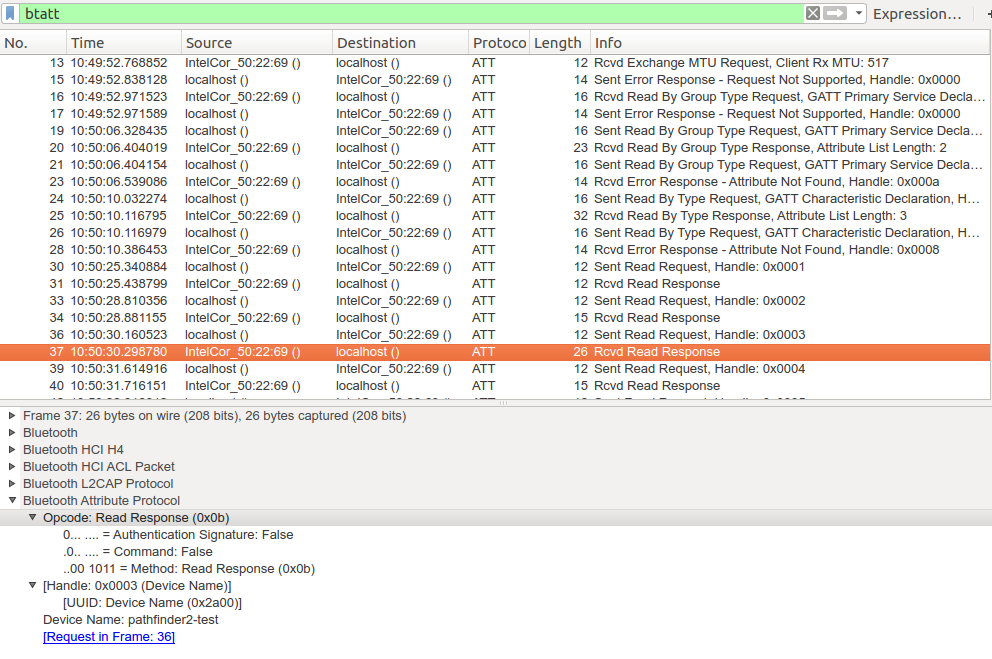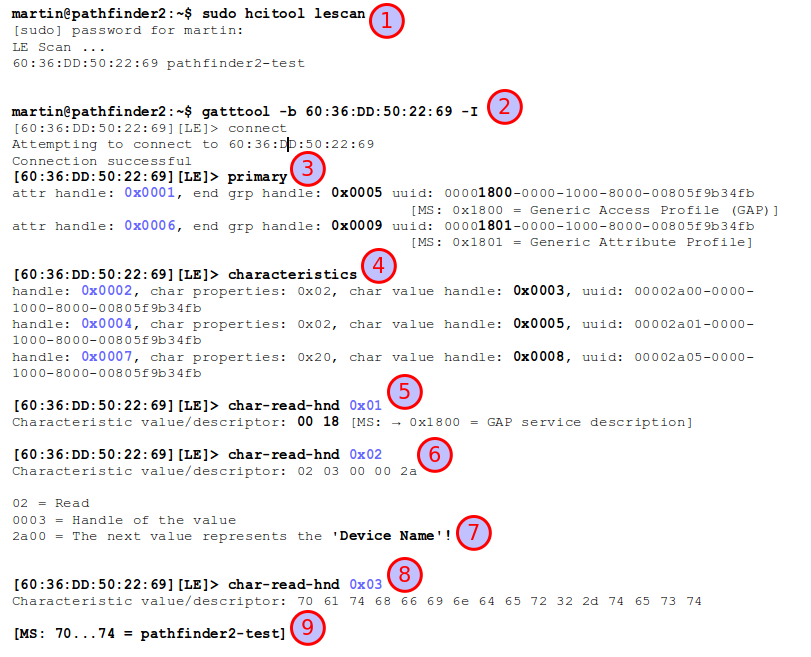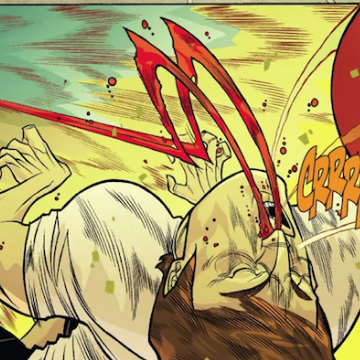Rolandt
Shared posts
Instapaper Liked: A Novel Defense of the Internet
Twitter Favorites: [anildash] A lot of open infrastructure that made social media work has disappeared. Can it be rebuilt? https://t.co/cPOICqzc6H https://t.co/9OcTMmiiyZ
A lot of open infrastructure that made social media work has disappeared. Can it be rebuilt? medium.com/@anildash/the-… pic.twitter.com/9OcTMmiiyZ
Twitter Favorites: [kevinmarks] Here, @anildash, I made a start at filling in your missing column on the wiki. https://t.co/qIAEuyDpDy https://t.co/9tbSTXGD3p
Here, @anildash, I made a start at filling in your missing column on the wiki. indieweb.org/lost_infrastru… twitter.com/anildash/statu…
Twitter Favorites: [GMPaiella] I wrote about the murdered joggers and the ways that women runners are constantly forced to consider our own safety https://t.co/pid74LYPuz
I wrote about the murdered joggers and the ways that women runners are constantly forced to consider our own safety nymag.com/thecut/2016/08…
Clay Shirky: CIO, O2O, IoT
There's a fascinating podcast / interview here with Clay Shirky. It focuses on his book about Xiaomi, which is very good and doesn't seem to have been read enough.
Some little thoughts that struck me:
He's the CIO of NYU Shanghai in China. That's really interesting, the perfect example of having an internet person in charge of technology. Every educational institution is going to have to do that.
O to O - "online to offline" is a new coinage I'd not heard before. It's the way you can "interpolate a service layer between anything you can do offline and your computer." Basically delivering stuff and services in the real world. It hadn't occurred to me before that this wasn't most developed in big Amazony Western markets. Naive of me. The descriptions of it happening in 'Tier One' Chinese cities are fascinating.
He suggests that Chinese businesses might find it difficult to get good at the Internet of Things because their censored and constrained version of the internet means it can't be guaranteed to be always on. So they won't be designing for a world where your devices can always access the internet.
I wonder if the opposite of that might be true.
I remember Matt and Tom of Thington talking very persuasively about that 'always connected' assumption makes for products that struggle in most of the real world. You have to design IoT things that can cope with interruptions. China might force you to be good at that.
[NSFW] These Shapeshifting Dots Are Not What They Seem
 Screencaps via
Screencaps via
Our first introduction to video artist and music video director denial.of.service was a cyberpunk smart drug trip gone horribly wrong. Featuring abstracted geometries and static, the work was a shapeshifting procession of 3D scans warped in a range of black-and-white generative visuals.
In his latest video for Aeternam Vale & Kerri LeBon’s “Hiding Love,” denial.of.service again explores molten shapeshifting. But this time he does so using a hallucinatory style of digital stippling, a technique typically reserved for pen and paper. In it, hundreds of dots of various sizes come to constitute a whole image.

In what looks like found porn footage, two lovers cavort as their bodies move in and out of focus with denial.of.service’s stippling. The results make it look almost like an animation, with the stipples rippling, expanding, retracting and thus forming and unforming the lovers’ bodies.

denial.of.service found the technical and aesthetic inspiration in Robert Hodgin’s experiments in digital stippling. While Hodgin uses his stippling algorithm, which has magnetic particles that push pixels in different directions, to slowly build stipple recreations of classic artworks, denial.of.service’s approach is far more abstract and experimental. And, when paired with Aeternam Vale & Kerri LeBon’s “Hiding Love,” it's highly erotic.
Click here to see more of denial.of.service’s work.
Related:
This Music Video Is a "Smart Drug" Trip Gone Horribly Wrong
Belgium's First 360° Music Video Nails It
Digital Distortion Slices Up Olga Bell’s Newest Music Video [Premiere]
Paint, Oil, and Milk Form a Phantasmagoria of Rainbow Colors
 Screencaps via
Screencaps via
In Memories of Painting, French video artist Thomas Blanchard reimagines the act of painting, setting in motion a variety of fluids and shooting macro footage of the interactions. The result is a blend of video art and experimental painting, with paint, oil, milk and liquid all moving in circular motion.
Blanchard’s latest video, Colors, builds on this technique, but taking it in a slightly different direction. While he once again uses paint, oil, oat milk, remover, bleach, and soap liquids, Blanchard now sets his camera in circular motion or zooms in on the fluids, creating multiple layers of pleasing macro-cinematic movement.

The music of Velvet Coffee also adds a nice dimension to the video. It has a sort of Philip Glass vibe, which definitely works well with Blanchard’s vivid camera work and combinations of vibrantly colored liquids.
Click here to see more of Thomas Blanchard’s work, and here to listen to more Velvet Coffee.
Related:
Milk and Oil Dance in ‘Memories of Painting’
Watch a Colorful Short Film Made from Paint, Milk, and Honey
A Bluetooth Low Energy (BLE) Wireshark Trace
 I recently wanted to dive a bit into how Bluetooth Low Energy, also referred to as BLE or Bluetooth Smart, works on the inside. One thing that is really helpful after looking at a lot of documentation and great resources on the web is to have a look at an actual trace. There are quite a number of good tools out there to make Wireshark traces but unfortunately it’s quite difficult to find downloadable BLE pcap files. Time to change this!
I recently wanted to dive a bit into how Bluetooth Low Energy, also referred to as BLE or Bluetooth Smart, works on the inside. One thing that is really helpful after looking at a lot of documentation and great resources on the web is to have a look at an actual trace. There are quite a number of good tools out there to make Wireshark traces but unfortunately it’s quite difficult to find downloadable BLE pcap files. Time to change this!
In practice there are two ways to trace BLE: The best way is to buy a BLE sniffer USB dongle such as the Bluefruit LE Sniffer for a few euros. That gives you access down to layer 2 and you can trace real communication between two BLE devices.
Another way to trace BLE is to use Linux and hcidump on a PC with a built in Bluetooth 4.0 chip or a separate Bluetooth dongle. While this doesn’t require additional hardware the disadvantage is that the trace is done at the Host Control Interface (HCI) level so you won’t see lower layer Bluetooth messages. This is what I’ve done for this blog entry and here’s the PCAP trace of the exercise.
As I didn’t have a ‘real’ BLE device to communicate with, I did the next best thing and used a second notebook with a Bluetooth 4.0 chip inside to simulate a BLE peripheral. This can be done with the following commands on the shell:
# Check if the BT device is up hciconfig # Configure an advertisement message “Hello world”… sudo hcitool -i hci0 cmd 0x08 0x0008 1e 02 01 1a 1a ff 4c 00 02 15 e2 c5 6d b5 df fb 48 d2 b0 60 d0 f5 a7 10 96 e0 00 00 00 00 c5 00 00 00 00 00 00 00 00 00 00 00 00 00 # Switch on advertisements and make the device connectable sudo hciconfig hci0 leadv 0
For details see here.
Once the simulated BLE peripheral is up and running one can then go ahead on the other PC and connect to it using the gatttool that is part of the Linux Bluetooth stack in many distributions. After reading the BLE spec about GAP, GATT, services, characteristics, attributes and handles you’ll immediately feel at home. The second screenshot shows what I’ve done and I’ll give a quick step by step walk through below:
The first step (1) is to perform a BLE scan to find all BLE devices nearby that are advertising their services. This resulted in the BLE MAC address and name of my other notebook acting as a BLE peripheral.
Next (2) the gatttool (Generic Attribute Protocol (GATT) – Tool) can be used to connect to the device. The ‘-I’ parameter starts the tool in interactive mode. Step (3) after connecting is to ask the BLE peripheral device for all services it offers. As this was only a simulated BLE device it only offers the Generic Access Profile (GAP) service and the Generic Attribute Profile (GATT) service. Those aren’t really services at all but just give general device capabilities. Real BLE devices will have additional services, e.g. temperature, humidity, acceleration, etc. etc. services that have values one can read, or variables for actuators such as switches, etc. that one can write to.
Speaking of variables, BLE communication revolves around variables one can read and write to. Variables are referred to as Attributes in the BLE specification. A variable, i.e. an attribute, doesn’t only have a value it also has a description, i.e. what is its purpose, can it be read, can it be written to, does encryption have to be activated for the connection before the attribute is accessed, etc. The combination of description and the attribute value is called a characteristic. Characteristics are further grouped into services, i.e. a service can have several characteristics, i.e. several variables with their variable descriptions.
Let’s continue with the steps in the screenshot. In step (4) the ‘characteristics’ command returns a list of all variables of all services. Everything in BLE, be it a description of an attribute or the attribute itself is accessed via a 16 bit handle. In the screenshot there are 3 descriptions of attributes (variables) and their handles are 0x0002, 0x0004 and 0x0007. Handle 0x0001 was already used in step (3) and points to the service description that bundles several characteristics (i.e. variables).
In step (5) the ‘char-read-hnd’ command is used to read the attribute behind handle 0x0001. The value is 0x1800 which is the defined service identifier for the GAP service.
In step (6) the ‘char-read-hnd’ command is used to read the attribute behind handle 0x0002. As this handle directly follows the service identifier handle it contains information about the first variable the service offers. As can be seen in (7) the bytes returned describe that the attribute that is described is read only, the handle for it is 0x0003 and that the value represents the device’s name.
In step (8) the ‘char-read-hnd’ command is used to get the value behind handle 0x0003. The bytes returned are the ASCII values of the device’s name. If you go through an ASCII table or have a look in the Wireshark trace, the bytes decode into ‘pathfinder2-test’, the name I’ve given the PC which simulated my BLE peripheral (9).
This looks quite complicated at first but in essence this is a standardized way for a device to discover all services a BLE peripheral offers and which variables can be accessed via which handle number. While manufacturers are at liberty to define their own services and description of variables, there are standard BLE profiles for all sorts of sensors and actuators in which the description IDs are standardized which makes it easy to parse the capabilities of unknown devices that stick to standardized profiles.
Once a device knows which handles have to be used to get a sensor reading such as a temperature, a humidity value, etc. it can connect to a BLE peripheral and simply do a ‘read-char-hnd’ request to read the variable directly. No need to traverse the service tree again.
Making a Bloody Comic? Watch This First.
 This intricate panel captures three distinct moments that all culminate in blood. Panel from The Strange Talent of Luther Strode by Justin Jordan, Tradd Moore, and Felipe Sobreiro. Screencap via
This intricate panel captures three distinct moments that all culminate in blood. Panel from The Strange Talent of Luther Strode by Justin Jordan, Tradd Moore, and Felipe Sobreiro. Screencap via
It's a focus on framing violence in this week’s episode of Strip Panel Naked, an essential ongoing mini-masterclass in comic-making. While any old indie can fill its pages with gore to attract attention, some creators are more careful with their craft. Hass Otsmane-Elhaou, comic guru and creator of Strip Panel Naked, sets his sights on the very bloody The Strange Talent of Luther Strode by writer Justin Jordan, illustrator Tradd Moore, and colorist Felipe Sobreiro. Otsmane-Elhaou was interested in exploring this brutal comic, “because it primarily does one thing: violence. It does it a lot.” And though at times, comics are grotesque just to be grotesque, “there's a lot of clever work going into how Strode builds its famously violent moments. So I take a look at how panel borders, pacing, framing and coloring all affect how we perceive these moments of violence.”
Otsmane-Elhaou believes this book, despite its graphic nature, deserves an intense study: “It's very easy to pick up this book, flick through a few pages and think it's just violence and nothing else. But it's done in particular ways which are all intended to build and ramp up as the comic does. So what it adds is moments of emphasis, the first violent images you see in the book really stick in your mind. But as the book continues, and it becomes more and more intense and more and more graphic, you do start to become desensitised somewhat.” This calls into question the very nature of the content of the work as “the moments start to feel much less impressive, because you're getting so much of the violence.”
 Even teeth can be deadly weapons in this comic. Panel from The Strange Talent of Luther Strode by Justin Jordan, Tradd Moore, and Felipe Sobreiro. Screencap via
Even teeth can be deadly weapons in this comic. Panel from The Strange Talent of Luther Strode by Justin Jordan, Tradd Moore, and Felipe Sobreiro. Screencap via
This week's video also focuses on the use of color to accent and highlight the violence. “It's all about focusing the eye,” says Otsmane-Elhaou. “What [color artist Felipe] Sobreiro does here with these extra highlights is just make you keep your eye on a particular element. Rather than wandering around the page, your eye is always drawn the brightest part of an image, so Sobreiro does the simple thing of brightening these impact points to let you know where to look.” Does all this gore need the extra attention? “Well, it's there for a reason in this book—for you to look at it, and feel impactful. Color is supremely important in making that happen.”
Watch this week’s Strip Panel Naked for yourself, below (but be warned, the comic covered is pretty damn violent):
To watch back episodes of Strip Panel Naked, head to the series' Youtube page. If you like what you see, consider donating to SPN on Patreon.
Related:
Master the Tricky Art of Comedic Timing in Comic Books
Some new love for Scala and Python
I did a lot of work in machine learning in the 1980s (mostly in neural networks) and since then I have probably spent only 15% of my work time directly working on machine learning problems. That has changed in the last few years since several of my consulting customers wanted help spinning up on machine learning. I even created a new web site COGNITION.tech specifically for attracting new machine learning consulting business.
I have used Scala a fair amount but it has never been a "favorite language," mostly because I didn't care for the tooling. Now I find myself motivated to use Scala because of the awesome Apache MLlib and Breeze machine learning libraries. Also, I have solved my "tooling problem" for Scala development; if you are interested here is my setup: I use a remote high-memory, high-CPU server instance for fast builds. I used to use IntelliJ for Scala development but now I just keep a SBT console open and use Emacs with Ensime and sbt-mode and access my remote server via SSH shells. This is a simple setup but now I am happier using Scala.
I have also been spending a fair amount of time with Google's TensorFlow deep learning tools and the easiest path to solving problems with TensorFlow is working in Python. If you are interested, I do almost all of my work with Python using the free community edition of PyCharm.
So, in general I am trying to avoid the "want to use my favorite programming language trap." The joy is in solving problems and not in wanting to use a favorite language and software stack.
Deconstructing CBE
Richard Garrett, Howard Lurie,
Ellucian, Eduventures, ACE,
Aug 17, 2016
As the press release states, "'Deconstructing CBE' analyzes the diversity of CBE (Competency Based Education) programs and evaluates how CBE can be customized to meet specific institutional needs." The study touts some of the advantages of CBE. "CBE targets a diverse community: The majority of respondents (68 percent) look to CBE to expand opportunities and enhance learning for non-traditional students." Additionally, "CBE does not have to be delivered online, and need not be entirely self-paced." The full report (37 page PDF) describes three case studies (or 'portraits') and is based on a survey of 251 institutions in the U.S. According to the report, "CBE raises critical questions about how institutions could be organized and financed and what roles faculty and other instructional support providers might play." Via ACE, which also links to a 2014 special issue of ACE's The Presidency on "The Road to Competency-Based Education."
[Link] [Comment]BBC micro:bit forms part of Technology Day at Eastlea Community School
Andrew Robertson,
Microsoft Developer,
Aug 17, 2016
The story is super-local but the impact of this program is nation-wide. The BBC micro:bit "is a pocket-sized computer that you can code, customise, and control to bring your digital ideas, games, and apps to life." It costs maybe $15 or so. You use it to create different hands-on computer projects, for example, in this case, rocket cars. It was part of this school's technology day, which also included the use of Raspberry Pi. See more in this video. Hand-on real projects are the best kind of learning, creating skills and memories that last a lifetime.
[Link] [Comment]I was surprised that so many of the NACL 2016 papers described deep learning projects
The conference was great. The keynote talks, panel discussions, and the talks I attended were interesting! As an independent consultant I payed my own way to the conference and I found it to be a good investment. Sometime I would enjoy attending a European chapter of the ACL conference.
Information Technology Strategic Plan 2016-2020
Treasury Board of Canada Secretariat,
Govenrment of Canada,
Aug 17, 2016
No doubt the Government of Canada strategic plan will be of interest especially to Canadians, but the areas of focus should be of interest to governments and institutions worldwide. "Each area of focus details specific actions and activities that are underway or that represent new enterprise directions.
- Service IT introduces the use of cloud computing, information-sharing platforms, and technologies and tools to manage IT service delivery and improve client satisfaction.
- Secure IT focuses on layered defences to reduce exposure to cyber threats, increased awareness and understanding to manage these threats, and protective measures to enable the secure processing and sharing of data and information across government.
- Manage IT presents a strengthened governance approach, the evolution of IT management practices, processes and tools, and a focus on innovation as well as sustainability.
- Work IT introduces actions to build a high-performing IT workforce and a modern workplace that provides public service employees with the tools they need to do their jobs."
These are also probably areas of priority for my own organization and for educational institutions worldwide.
[Link] [Comment]Obsolesced: The Rise and Fall of Gopher
Tim Gihring,
MinnPost,
Aug 17, 2016
People have forgotten, I think, that there was an internet before the web. This is the story of part of it: Gopher. Developed at the University of Minnesota, "it was simple enough to explain: With minimal computer knowledge, you could download an interface — the Gopher — and begin searching the internet, retrieving information linked to it from anywhere in the world." It looked for a time like Gopher was the future of the internet. "Gopher developers held gatherings around the country, called GopherCons, and issued a Gopher T-shirt — worn by MTV veejay Adam Curry when he announced the network’ s Gopher site. The White House revealed its Gopher site on Good Morning America."
[Link] [Comment]Tim Cook Reflects on His First Five Years as CEO
The Washington Post has an extensive interview with Apple CEO Tim Cook about his first five years leading the company. Jena McGregor, who writes a daily column about leadership for the Post, spoke to Cook twice, including shortly after the one billionth iPhone was sold. The interview is a great read and spans a wide array of topics that together paint a picture of how Cook approaches his role.
Regarding his desire to not be a traditional CEO, Cook explained:
I think of a traditional CEO as being divorced from customers. A lot of consumer company CEOs — they’re not really interacting with consumers.
I also think that the traditional CEO believes his or her job is the profit and loss, is the revenue statement, the income and expense, the balance sheet. Those are important, but I don’t think they’re all that’s important. There’s an incredible responsibility to the employees of the company, to the communities and the countries that the company operates in, to people who assemble its products, to developers, to the whole ecosystem of the company.
Asked about Apple's long-term growth prospects, Cook highlighted services and the iPad Pro, which is increasingly being used in enterprise environments:
In today’s products we have services [iCloud, App Store, Apple Pay and the like], which over the last 12 months grew about $4 billion to over $23 billion [in sales]. Next year we’ve said it’s going to be a Fortune 100 company in size.
What else? IPad. The iPad Pro. What we saw in this past quarter is that about half of the people who are buying one are using it at work. We have an enormous opportunity in enterprise. Last year we did $25 billion or so in it around the world. We’re collaborating much better with key partners because it’s important, if you’re making a decision to use our products or anybody’s products in the enterprise, that they work well together.
On social issues, Cook discussed how Apple's stance on civil rights and climate change fit with its approach to customers and the products Apple creates:
I think everybody has to make their own decision about it. Maybe there are compelling reasons why some people want to be silent. I think for us, though — for a company that’s all about empowering people through our products, and being a collection of people whose goal in life is to change the world for the better — it doesn’t sit right with me that you have that kind of focus, but you’re not making sure your carbon footprint isn’t poisoning the place. Or that you’re not evangelizing moving human rights forward. I think every generation has the responsibility to enlarge the meaning of human rights.
When asked about mistakes made during his tenure as CEO, Cook echoed comments made to Fast Company regarding Maps, but also discussed the hiring of John Browett to lead Apple's retail team:
I hired the wrong person for retail [former Dixons CEO John Browett] initially. That was clearly a screw-up. I’m not saying anything bad about him. He didn’t fit here culturally is a good way to describe it. We all talked to him, and I made the final decision, and it was wrong. We fairly quickly recognized it and made a change. And I’m proud we did that.
McGregor's experience writing about leadership is evident from her interview with Cook. The questions go well beyond the kind of things Cook is typically asked about Apple, capturing more about him as an individual and his leadership style than most interviews that I've read.
→ Source: washingtonpost.com
Predicting the future
Doc Searls, on Twitter, links to some predictions for the future of marketing.
If you read that, it looks like the future will be...basically, copied from a white paper about retargeting.
Yawn slash eeew.
You can't just predict that the future is like today but more so. That would have gotten us "interactive TV" instead of the Web.
I'm not going to predict the future of Marketing in general, but since there's a lot of attention to one corner of it, here goes.
Consolidation. I don’t know if we’ll get all the way down to a two-logo Lumascape, but single digits, maybe. Two-sided markets tend to consolidate, because buyers go where the sellers are and vice versa. This isn’t happening in web advertising, because agencies have an interest in artificially complicating the online ad business, and venture capitalists have funded a lot of competing, minimally different, startups that will take time to settle out. But with more scrutiny on agencies because of the rebates problem, and less incoming VC money to adtech, it will be easier to see the consolidation happening.
More and harder math. As complicated as the math in online ads is now, it’s about to get more interesting and potentially way more important. Right now, online advertisers are playing a relatively simple level zero game of maximizing response rate given the available ability to target users in each medium. The next step is the level one game where brands and publishers re-shape the medium (and the ability of users to control it) in order to adjust how well the medium’s users can be targeted by a brand and its competitors.
An ad medium that facilitates collection of information from the user also limits transfer of information to the user, which is necessary for brand building (There’s no free lunch). Brands and publishers will need to adjust the balance of targetability and signal-carrying ability. That means that over the next several years, advertisers will have to solve level one problems in the areas of Behavioral Economics and Signaling.
More memorable ads. As a user, right now you’re seeing a lot of crappy ads, because the problem of measuring immediate response to a terrible ad is easier than the problem of measuring Brand Equity changes as the result of a signal-carrying ad. The terrible ad problem is temporary. Advertising is not a zero-sum struggle with math and technology on one side, and creative on the other. Better math will have the side effect of informing and justifying better creative.
Ad blockers fade to the background. Right now, the ad blocker is a threat to legit ads because new blocking development is sustained by the paid whitelisting model and because high-value and low-value ads are delivered the same way. High-value ads will beat ad blocking, possibly with a combination of
legal and regulatory attacks on paid whitelisting
front-ending the CMS with a proxy server that stitches ads into place and obfuscates IDs and classes
limiting third-party tracking that facilitates low-value and fraudulent ads
Ad blockers (and other privacy tools, as a side effect) will still catch the crap ads. And advertisers will still have to consider ad blocking, but in the background, much as email newsletter senders have to consider the spam filter. Go watch that Johnny Ryan video that I linked to last time.
(This post started as an answer on Quora so go upvote there if you do the Quora thing.)
"We’re living in a very fast world where everything happens instantaneously, but fermentation and..."
- Darra Goldstein, quoted by Charlotte Druckman in The Art of Preservation, in a New Food Magazine, talking about the new food magazine, Cured
Hyper

This is curious. Doesn’t seem to be scriptable like the original HyperCard at all, but the ability to build and share simple web-based apps across devices is interesting (and useful).
Worth keeping an eye on, I think.
Things About “No Man’s Sky”
Of course I had to pre-order this one after reading World Without End in The New Yorker. I’ve only played a few evenings, haven’t done anything ambitious, but I’ve learned that when you’re learning something is a good time to write about it.
It’s just really cool bringing your ship in for a landing on a new planet.
There seems to be a consensus that with this game, spoilers are a virtue; I think I would have found it severely frustrating if I’d had to puzzle out all the crap I picked up in a quick scan of Reddit & IGN.
There’s another consensus that, whether or not it’s actually good as a game, the early experience of just wandering around looking at stuff is pretty compelling.
Of course, the quick convenient interplanetary traversals are wildly implausible physically. Charles Stross’ Towards a taxonomy of cliches in Space Opera has the details, but I’m not letting them bother me.

Notwithstanding Stross, the fact that humans like inventing new planets (or, in this case, arranging to have them computed) is one of our better features.
I’m giving my systems and planets names like “T. Bray 00003”. Sue me for an unimaginative clod. Except for I fat-fingered the one above, which is now known simply as “T”. And there’s no redo once you hit “upload”, because who’d ever want to fix a typo in the name of a planet?
Which makes me think about the database. There may be a kazillion bajillion planets, but I guess they’re computed on demand. But once I’ve visited one and lit up a few beacons, that has to be persisted. Given that there are likely millions of people playing, I bet the state is aggregating at an alarming rate. I wonder what they’re using? I wonder if they’re on AWS?
There are planets with lots of useful stuff that are radioactive and dangerous, and others that are safe but empty. I suppose nice and fruitful is possible in principle.
Who knew the experience of space travel would be just like that old Windows 3.1 screen-saver with the stars hurtling toward you?
There’s a trick for combining the melee and jetpack buttons to make huge cross-country leaps. I’m not sure it really gets you there faster, but it’s fun.
The scripted parts of the game can be a little mean-spirited; there was this one place where you can get something cool for twenty carbon only I didn’t have any, but there were two plants in the room I could mine, for a total of 19.
I was following a beacon signal towards a new planet when I came under fire — still haven’t figured out who was shooting. I twisted and scrambled and accelerated and came in for a hard landing on the nearest moon, where the attacker wouldn’t follow. Is that space opera or what?
Both the geology, and the arc of the next-planet-over’s edge, are implausible I suppose. I walked along the top of that arch, though, just because I could.
Links 8/16: Ode On A Grecian URL
|
mkalus
shared this story
from |
Israel now gets 55% of its water from desalinization and has gone from drought-stricken to having more than enough to share. Related: Jeff Kaufman on the economics of desalinization in California.
Long 2004 piece by Atul Gawande on ranking doctors by outcomes, why we don’t usually do it, and diseases where it seems to work.
Bryan Caplan (2014): talk of the “increasing returns to a college degree” don’t necessarily motivate more students to go to college if they predict they’ll fail.
In November, Maine will vote on becoming the first US state to use ranked-choice voting.
A 2004 study showed that the antidepressant Celexa worked in children. Newer studies show it doesn’t. As part of a lawsuit, investigators got all of the pharma company’s internal data on the trial that “proved” the drug worked. So if you ever want to see exactly how pharmaceutical companies cook their trials, here’s your chance.
Did you know: military dogs traditionally outrank their handlers in order to encourage the handlers to treat them with respect.
The Mennonites are an anachronistic German Protestant group much like the Amish. And like the Amish, they have big communities in Pennsylvania. But did you know there are also large Mennonite communities in Paraguay, Mexico, and Belize?
Fredrik deBoer’s thoughts on atheism pretty much parallel my own evolution on the same subject.
AskReddit: what is the weirdest sensation you’ve only felt once?
IF you’re anxiously awaiting Civilization 6, there’s a good compendium of all available information about the game here.
Missouri governor defunds the state’s public defense system so that it has trouble hiring enough lawyers to defend cases. Head public defender makes use of an obscure law that lets him “draft” lawyers when not enough are available – and drafts the Missouri governor himself to fill in until the funds arrive.
I think someone might be trolling the sovereign citizens – somehow it’s entered into their lore that if you officially write “I am an idiot” on your court paperwork, the government can’t prosecute you. I guess I understand how this sort of makes sense – “idiot” used to be Greek for someone not involved in political life – but I still wonder if this is the best prank of all time.
The governor of Nebraska occasionally honors people by declaring them an Admiral in the Great Navy of the State of Nebraska. A similar tradition of Kentucky honoring people by naming them Colonels is how we got Colonel Sanders. Related Colonel Sanders fact: he was so angry with KFC switching from his original recipe that he denounced their food as “pure wallpaper paste…there’s no nutrition in it and they ought not to be allowed to sell it.”
Poll finds that 37% of Trump supporters have zero friends who support Clinton; 47% of Clinton supporters have zero friends who support Trump.
Remember when LHC thought they found a new particle recently. They didn’t. Scientists in other fields declare physicists weird, creepy for waiting to make sure finding actually exists before announcing it.
Sam Bowman’s neoliberal manifesto aims to carve out “neoliberalism” as a particular policy position (instead of just a vague smear) based around belief in markets, technocratic managerial competence, and interest in helping the poor through evidence-based programs. It’s a useful term since it has elements of liberalism and libertarianism but doesn’t exactly fit into either. But I worry it still doesn’t draw a fine enough distinction. Hillary Clinton and Peter Thiel would probably both be “neoliberals” under this definition, but there’s a big gap between them. More important, Hillary’s brand of neoliberal can probably be relatively happy with the direction things are going, whereas Thiel’s brand is phenomenally unhappy. A better explanation of the differences between the two might be a worthwhile project.
Studies kept finding that people who drank more alcohol had lower mortality, but everyone assumed it was doomed to stay a correlational finding only – after all, you couldn’t ethically randomize people to start drinking alcohol, could you? Well, now they did a study where they randomized people to start drinking alcohol.
Donald Trump quotes superimposed on pictures of Zapp Brannigan works surprisingly well.
New paper finds that blinded review of linguistics papers increased percent of women whose papers did well at a conference, suggesting previous discrimination against women. Slight catch is that in previous linguistic conferences, papers by men and women did equally well, but after institution of blinded review, women did much better than men. Authors write that this suggests previous bias against women lopped off the bottom half of the female ability distribution, leaving only women who were so brilliant that they could effectively compete on a skewed playing field, and who therefore did better than men once the playing field was leveled. I find this a little self-serving, but it’s hard to explain why blinding review would have this effect otherwise, and I don’t see any obvious attempts to cook the data. All of their data is freely available (good for them!) so if you want to investigate yourself, let me know if you find anything interesting.
Vox: why is GDP growth so slow?
In case you really like quantifying things, here’s The Cost Of Crime To Society. They just gave per crime statistics, but multiplying everything out it looks like it’s on the order of $300 billion/year, which is way more than I expected and which doesn’t even seem to count things like decreasing land values.
This week in “studies saying the opposite of what previous studies said”: Uber does not decrease traffic fatalities; Mexican immigration does decrease native wages; but only for African-Americans; religious children are no less altruistic than anyone else.
Scientists have bred alcoholic rats in order to investigate the genetics of alcoholism.
A single mutation in horses 1000 years ago noticeably increased their rideability.
There have been no major hurricanes in the US for 11 years, which is statistically super-unlikely. I’m sure global warming skeptics will pounce on this, but this actually seems to go beyond no-change – is it possible that global warming might paradoxically decrease hurricane frequency?
New York Daily News: We Were Wrong: Ending Stop-and-Frisk Did Not End Stopping Crime. I will always republish people admitting they were wrong, so good for them.
Filipino president verbally attacks the Pope, jokes about raping missionaries, announces that “I don’t care about human rights”, catcalls female journalists, encourages citizens to shoot drug dealers, and called the US ambassador “a gay son of a whore”. But also, he is lauded for his work promoting women’s and LGBT rights in the Phillipines, and during his tenure as Mayor of Davao transformed it from “the murder capital of the Philippines” to “the world’s fourth safest place”.
That weird star that we’re not supposed to blame on aliens is still doing weird things.
Chinese audiences loved “Kung Fu Panda” so much that it inspired national soul-searching on why the West was better at making Chinese-culture-themed movies than they were.
Musical Alexander Hamilton: proud immigrant who sings together with Lafayette about how “immigrants get the job done”. Real-world Alexander Hamilton: “The United States have already felt the evils of incorporating a large number of foreigners into their national mass…to admit foreigners indiscriminately to the rights of citizens, the moment they put foot in our country, as recommended in the Message, would be nothing less, than to admit the Grecian Horse into the Citadel of our Liberty and Sovereignty.” H/t Alyssa Vance.
There is no hedonic adaptation to poverty; “poverty starts bad and stays bad in terms of subjective well-being”.
Mirrorless Night Sky Photography, Milky Way and Perseids
Rolandts
I’ve been meaning to write a post about how I make my night sky photographs for awhile now. With the Perseids moving through our orbit, this seems like a good opportunity to write about how to shoot them, weather-permitting, of course. I’m writing this from the perspective of using a mirrorless camera system like the Olympus OM-Ds, but most of this applies to DSLRs as well. There are advantages to both systems, but the thing I like best about mirrorless, is the close connection you have to the sensor through the LCD screen and viewfinder. Features like Live Boost and easy magnification make it simple to nail your focus and get a preview of the scene you’re shooting, even in very dark environments.
Step 1 – Pick your location
Milky Way and night sky photography benefits from having a good view of the sky. That means minimizing your light pollution as much as possible. That said, you can still get a surprisingly good image out of your camera, even in bright cities, if you know how to get the most out of your camera. If you’re in a city, try to find a location that has a clear view of the sky with minimal lights in your way. In Toronto, I’d go down to the beach and shoot out over the lake and be able to get a reasonably unobstructed view of the Milky Way. Still, there’s not much you can do about airglow, so the further you are from light pollution the better.
Step 2 – Camera Setup
Important gear: Tripod and a shutter release cable. The tripod should be obvious, but the release cable is a nice extra addon. It takes your hands away from the camera so you don’t shake it. Vibrations show up long after your hand has left the camera and will ruin an image. Some shutter release cables also have intervalometer settings if you want to do long exposures or timed exposures, so see what’s available and get one you like.
Mine just has a button on it.
If your camera has settings banks, and I know it does so you should look it up in your manual, it would be a good idea to make a custom setting just for night sky shooting. On my Oly, I have a settings bank dedicated to this so I don’t have to do too much fiddling in a dark field. My settings look something like this:
- Manual Exposure (M on the dial)
- ISO3200
- Shutter speed: 25-40s (depending on lens selection)
- Aperture: f1.8 or whatever the widest setting I have on my chosen lens
- Image Stabilization: Off (I’ll be on a tripod, so I don’t need the extra heat and battery drain of a gyro)
- Manual Focus
- Noise Reduction: On or Auto
- Noise Filter: Low or Standard
Those are the basics. You may find some other tweaks useful on your particular camera, but those are a good starting point.
Step 3 – Lens Selection
I have a couple of options for lenses, but on my Micro Four Thirds camera, these are my favorites, with appropriate shutter speeds in brackets:
- 8mm fisheye at f1.8, (40sec)
- 12mm at f2.0, (25-30s)
- 17mm at f0.95, (20s)
- 45mm at f1.8, (8s)
Those exposure times represent the longest I can leave the shutter open without introducing motion into the stars from the Earth’s rotation. It just so happens that the longest times (30-40s) happen to coincide with my sensor’s optimal exposure at ISO3200, so the fisheye and 12mm lenses are in a kind of sweet spot.
If you have an APS-C or Full frame sensor, your focal lengths will look 1.5 to 2x larger than my numbers. It turns out your exposure times will be roughly equivalent, depending on your sensor’s resolution. There’s an online calculator for you to figure out the longest exposure you can use without introducing star trails for your lens/sensor combo.
Startrails

The above is great if you want to take a single shot of a static sky, freezing the stars and planets as they are in under one minute. What if you want to take a longer exposure and capture the sky over a long period of time? You have a couple of options.
option 1: Bulb mode. Bulb mode opens your shutter and leaves it open until you release the switch. Not ideal, because you’re continually exposing the whole frame. Eventually, reciprocity will win and your image while be over-exposed. You can stop down your aperture and buy yourself a few more minutes, but even at smallest diameters, you’re going to be limited to 15 minutes or so. And that’s going to mean sensor noise.
option 2: Continuous shooting. This is as above, setting up your camera for a single long shot, but you’re going to set your camera to do continuous shooting. Usually called “drive mode” or similar. This way you can produce a hundred or more images in one setting and combine them later in photoshop or one of the other star stacking packages available on your computer.
One thing you’ll have to take into account is whether or not your camera is set to do long exposure noise reduction. This is usually a second exposure taken with the shutter closed and produces a black frame with just the sensor noise in it, used to reduce noise in the original image (dark frame subtraction). You’ll want to turn this off as it will introduce gaps into your exposure. I’ve found it best to limit my shutter speed to 8s or so when shooting this way because the camera doesn’t have to work as hard. You won’t get as much light, but you should get a seamless trail.
option 3: The Olympus cameras have a thing called Live Composite mode and it’s brilliant for this kind of thing. You take one exposure as your background or starter image. Subsequent images are taken and only the differences are added in. This makes it dead simple to do things like star trails and creative lighting tricks like light painting and so on.
Light From Dark and Dark From Light, Expose to the Right
So how do you capture dim stars from a bright location? As usual when it comes to photography, there’s a trick to it. The goal for astrophotography is to get as much light onto your sensor before it blows out the highlights. As it turns out, the stars aren’t that much brighter than the background, to your sensor, so that means leaving the shutter open for as long as possible. This gives your camera the maximum amount of useful information to work with. ISO3200 happens to be the largest workable ISO on the Olympus and Micro Four Thirds cameras before the sensor goes into boost mode (yes, I know it doesn’t say that on the screen, but trust me), so it has the best noise characteristics for long exposures.
Again, it just so happens that with my 8mm f1.8 and 12mm f2.0, those magical 30 to 40 second exposure times push my EV up to +3.0 without clipping. In normal shooting conditions, this would be horribly over-exposed, but for the night sky it’s perfect. Don’t worry if your preview looks like it’s washed out, as long as you have no highlight blinkies, you’ll be able to recover the scene in post.
Step 4 – Post Processing
Here’s another dirty little secret. If you want to capture some scenery on the ground, leave your camera where it is and change your settings. I usually drop back to ISO1600 or even 800 and go into bulb mode. I can take a 5 minute exposure of the ground at ISO800 and come out with a clean file with some color detail in it. Almost all of those cool starry scenes over pretty vistas are done this way and re-combined in photoshop later. Many will also shoot multiple images of the sky and use Photoshop’s Align Layers feature to increase the light gathering power of the sensor. When you multiply those layers together, the stars’ brightness is increased relative to the background and you get a better image.
But even if you don’t go to the trouble of taking multiple exposures and just work off a single image, you can pull up a lot of detail.
Here’s one I took in my backyard at ISO2500 for 30s with my 12mm.

 And this is what my settings look like in Lightroom.
And this is what my settings look like in Lightroom.
I only had to drop the exposure by -0.30 but on some of the brighter scenes, that could go as low as -1.4 or -2.0 to get the sky darker. Contrast is typically between +80-100 and same with Clarity. You can play around with Shadows and Highlights and mess with the tone curves to come up with something you like but these are the basics to turning your blown-out white sky into something that looks like a star scene.
Composited images (stacked and multiplied) pop even more with this type of setup.
Here’s a flickr album with some more eye candy. Click the picture to go to there!
Geeks and Autism
At some point I will write a more detailed review, but Jordynn Jack’s book Autism and Gender: From Refrigerator Mothers to Computer Geeks (University of Illinois Press, 2014) contains a thoughtful and rigorous study of the purported relationship between computer culture and Asperger’s Syndrome. Her primary focus is on popular media diagnoses of celebrated Silicon Valley entrepreneurs like Bill Gates and Mark Zuckerberg, but her larger argument about role of anecdotal evidence in framing Asperger’s as a “geek syndrome” is very relevant to the historical argument I make in both The Computer Boys book and my “Beards, Sandals, and Other Signs of Rugged Individualism” article. I wish that I had been aware of her discussion of the relationship between Simon Baron-Cohen’s work on Extreme Male Behavior and narratives about technology when I was doing my research. Although I am sure that Jordynn Jack would not define her book in terms history of technology, I hope that my fellow historians discover it. In my mind it is one of the most important contributions to our understanding of contemporary technology culture that I have read in a long while.
Reinvention, not reinsertion
In this week's ad blocking news, the Adblock Plus people are all butthurt that Facebook is reinserting ads by editing HTML instead of paying for whitelisting. I'm not sure who's winning right now, but by the time I put this up the current state of the "cat and mouse game" (when have you ever seen a mouse buy stuff from a cat?) will be different. So go follow Lara O'Reilly and Jack Marshall in your news recommendation tool of choice if you really want to keep up.
Anyway, the web advertising debate is about Adblock Plus the way that the online music debate was about Napster. Can we turn down the long-playing drama and pay attention to the important stuff here, for 23 minutes and 36 seconds at least? What will web advertising look like when the ad blocker fades into the background, the way that spam filters are a background concern for email newsletter senders?
Dr. Johnny Ryan, speaking at the Advertising Research Foundation (watch the whole thing) has a good part of the answer.
There is a big question over whether it is a good idea to restore all of the tracking functionality that might infringe on the user's personal rights, and that actually might take away from the value of the ad.
It's not just the user's rights. When an ad medium makes it harder to target individual users, it gets better at signaling. Context matters. There's no free lunch. Everything we know about how ads work in context tells us that the average web user is a pretty good applied behavioral economist.
That's where reinvention, not reinsertion, comes in. What does web advertising look like when it works with the user's mental "reputation coprocessor" and not against it? When advertising turns into a game that you can win with a sustained signal of quality, not with targeting tricks that have to change every time the users figure them out?
Light Transmission
Lots of photographers, and people who teach them, talk about the advantages of shooting under a cloudy sky, or of having the sun’s light behind you. Increasingly, I’m enjoying pointing my camera straight into the sun.

Of course, as above, this can force you into a monochrome presentation (although the dock above is in color). But I remember, during my time in publishing technology and then again in VR, learning about “emissive” as opposed to reflective color. I don’t remember the physics or the engineering, but I like it.

Of course, the color/monochrome continuum isn’t binary. Let’s take three steps into total whiteness overload.



Anyhow, the sun is my friend. If you take the conventional advice you spend all your time worrying about shape, and subtle shadings, and other grown-up stuff that isn’t rock-&-roll at all.

Tradition vs Transcendence - The Windows 8 Edition
From a 2002 Microsoft research paper describing Pelle Ehn's 'tradition/transcendence' tradeoff originally introduced in 1993:
A new product may be useful to new users, but not to the current users who have developed skills and conventions around existing tools and practices. The researchers saw a product potential, but worker participants desired a less generally useful system that was more closely synchronized with existing practices.
Familiarity and usability are competing forces in interface design. To facilitate a transition between the two, developers need to exercise patience. Microsoft are learning that. Unfortunately, and not at all surprisingly, that willingness to learn is being misconstrued as an admission of failure.
"Every large workshop and manufactory is a sort of political society, which no act of parliament can..."
-
>John Thewell, cited by Paul Mason, in The end of capitalism has begun
@stoweboyd
The average American waits six months of her life waiting for the lights to change–David Graeber https://t.co/vBc7GwbH8G
— Stowe Boyd (@stoweboyd) August 13, 2016
Backlight on Logi Create

I am really liking this keyboard. Logi Create with iPad Pro 9.7 and iA Writer in Night Mode. Full focus, no distraction. It's completely effortless.











